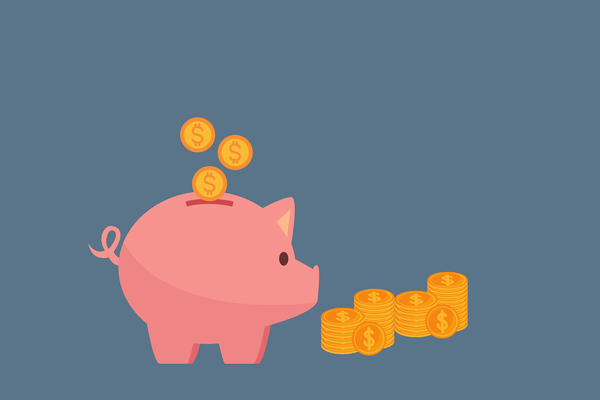How to Explain Data Breaches to Kids and Protect Them against Identity Theft

The internet offers so much—fun, learning, and ways to connect. But alongside those opportunities come risks, like data breaches and identity theft, which can feel like a lot to explain, especially if you're unsure how much your child should know.
Kids today spend more time online than ever, often sharing personal information or making purchases without supervision. This increases the risk of someone stealing their personal details or payment info. A young child might not understand that some things need to stay private. For instance, a 7-year-old could share their tablet password with a friend, not realizing it's the same password used for buying in-game items on Roblox. Add trusted relatives, family friends, or neighbors into the mix, and it's clear how easily a child's innocence can be exploited.
The risks grow as kids venture into social media, which they're doing in record numbers. Platforms like Instagram and Snapchat have seen a surge in users under 13. These sites, along with popular games like Roblox, are often magnets for scammers targeting children who may not recognize danger signs.
At first, stealing a child's identity might seem unlikely—after all, what use could thieves have for a child's credit? But that's exactly the point. Because adults rarely monitor their children's credit, thieves can misuse it for years before anyone notices, causing financial and emotional harm that can take a long time to repair.
Did you know?
- The Identity Theft Resource Center reports that around 1.3 million children's records are stolen each year.
- 2023 was the biggest year for education data breaches and records affected with 954 and 4.3 million recorded in total.
- A global report found that 72% of children have experienced at least one type of cyber threat online.
(Source cybermagazine.com, comparitech.com, www.idtheftcenter.org)
What is a Data Breach? (Explaining it to Kids)
Most adults and older teens are savvy enough not to fall for identity theft scams, but younger kids and unsupervised online socializing is the perfect storm for identity theft.
The first step is to talk about it.
Conversation Starter Ideas
Here are a few ways to ease into the conversation:
- "Have you ever seen a pop-up or ad while playing a game? Let's talk about how to spot ones that are safe versus ones that might not be."
- "Do you know why it's important to keep your passwords a secret? Let me show you how we can make yours stronger together."
- "What would you do if someone online asked for your email or password? Let's go over how to handle those situations so you feel ready."
What is a breach?
Start with simple terms they can relate to. For example:
"A data breach is like someone sneaking into a locker room and opening everyone's lockers without permission. They might take important things, like your favorite toys, or write down your secrets. Online, these 'lockers' are our accounts, and instead of toys, they can steal our private information like passwords or photos."
Why do we (as a family) care about data breaches?
Kids might not realize how valuable their online accounts are. Explain it like this:
"Sometimes, people who steal this information might pretend to be you online. They could send mean messages or play games using your account. This can hurt your reputation, or you could lose access to your games or apps. That's why we need to keep your accounts safe."
Focus on how it affects them personally (the records, points, and assets in a game, for example)—this keeps them engaged without overwhelming them with adult concerns.
How we can work together to keep you safe
Once they understand the problem, guide them on how to stay safe.
Use Strong Passwords
Encourage them to think of passwords like secret codes. Teach them to create one that's hard for others to guess but easy for them to remember.
Example: "Use a mix of letters, numbers, and symbols. Instead of 'Ilovecats,' try something like 'C@ts4ever!'"
Avoid Sharing Passwords
Explain why sharing passwords, even with friends, isn't safe:
Example: "Would you give someone the key to your house? Sharing passwords is just like that—you're giving them access to all your online stuff."
Enable Two-Factor Authentication (2FA)
Frame this as an extra lock on their "digital locker."
Example: "Even if someone guesses your password, they won't get in because of the extra step only you can do!"
Be Cautious of Links and Messages
Teach them to think twice before clicking on anything suspicious.
Example: "If you get a message from someone you don't know, don't open it. Even if it's from a friend, check with them first if the message feels weird."
Related: Talking to Strangers Online: Tips to Teach Your Kids About Digital Safety
Monitor Account Activity Together
Make it a team effort by regularly checking their accounts for unusual activity.
Example: "We'll look for anything that doesn't belong there, like strange messages or new logins you didn't make."
You can back up these instructions with Bitdefender Parental Control, which lets you know when your kids are online and what they're doing. It allows you to monitor online activity, block inappropriate content, and set internet time limits.
Other Practical Steps to Protect Their Online Accounts
Check Privacy Settings Together:
Sit down with your child to review privacy settings on their devices, games, and social media accounts. Show them how these settings keep their information secure.
Set Spending Limits:
On platforms where purchases are possible, such as app stores or games, set limits or require parental approval for every transaction.
Monitor Credit for Kids:
While it might seem unnecessary, keeping an eye on your child's credit can prevent long-term issues. Consider using a credit monitoring service that alerts you to suspicious activity.
Related: How to Talk AI and Deepfakes with Children
FAQs
How do I explain data breaches to a young child without scaring them?
Start with a simple analogy they can relate to. For example, compare a data breach to someone sneaking into a locker room and opening lockers without permission, taking secrets or toys. Emphasize that it's not their fault if something happens but that taking precautions—like keeping passwords secret—is important. Keep the tone calm and supportive to avoid overwhelming them.
What should I do if my child's account is compromised?
If you suspect your child's account has been hacked or breached, follow these steps:
- Change the password immediately and make it stronger.
- Enable two-factor authentication (2FA) if the platform supports it.
- Check for unauthorized purchases or activity and report them to the platform.
- Contact your bank or credit card company if financial information is involved.
- Educate your child about what happened and how to avoid similar situations in the future.
How can I help my child create strong, memorable passwords?
Encourage them to think of a "passphrase" made up of unrelated words, numbers, and symbols. For example, "BlueBanana$2025!" is stronger than a single word. Make it fun by letting them choose words that mean something to them but aren't easy for others to guess. Avoid using personal information like their name, birthday, or favorite game.
What should I do if my child was involved in a breach?
If your child's information was exposed in a data breach, take these steps:
- Identify what was breached: Check if it's their email, password, Social Security number, or other personal information. Most companies will notify you of the type of data involved.
- Change passwords immediately: Update passwords for all accounts associated with the breach, and ensure they are strong and unique.
- Monitor for unusual activity: Keep an eye on their accounts for suspicious logins, messages, or unauthorized purchases.
- Freeze their credit: If sensitive information like a Social Security number was exposed, consider placing a credit freeze with major credit bureaus to prevent identity theft.
- Educate your child: Explain what happened and the importance of staying vigilant. Turn it into a learning moment so they know how to handle similar situations in the future.
tags
Author
Cristina is a freelance writer and a mother of two living in Denmark. Her 15 years experience in communication includes developing content for tv, online, mobile apps, and a chatbot.
View all postsRight now Top posts
How to Protect Your WhatsApp from Hackers and Scammers – 8 Key Settings and Best Practices
April 03, 2025
Outpacing Cyberthreats: Bitdefender Together with Scuderia Ferrari HP in 2025
March 12, 2025
Streamjacking Scams On YouTube Leverage CS2 Pro Player Championships to Defraud Gamers
February 20, 2025
How to Identify and Protect Yourself from Gaming Laptop Scams
February 11, 2025
FOLLOW US ON SOCIAL MEDIA
You might also like
Bookmarks







